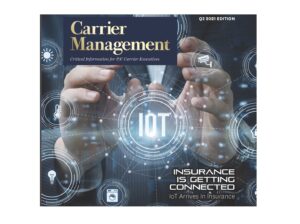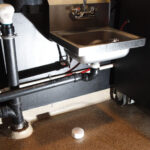Back in 2011, the publishing company I used to work for hired a new editor. He was the recipient of multiple awards for outstanding journalism, but insurance was a totally new gig for him. As a newcomer to the subject matter, he often asked provocative questions about the industry that the rest of us, embarrassingly, would never have thought to bring up.
One of the most memorable was, “Is the world becoming riskier or safer?”
Hmm. With my daily reporting focused on emerging risks ranging from severe weather risks to network security issues, it didn’t occur to me to ask anyone that. This was in 2011, a year after the Deepwater Horizon spill; the year of the Tōhoku earthquake, tsunami and Fukishima meltdown; and a few years after the global financial crisis.
My editor didn’t just raise the question to our staff. He assigned us each the task of interviewing executives in the insurance industry, risk modelers and risk managers to weigh in. Two of the 10 folks I interviewed voted for “safer,” even though that answer didn’t really seem like it was in the best interest of respondents, many of whose companies collect premiums from customers who transfer risks to them.
A summary of answers from all 30 respondents still exists on the website of my past employer today (PC360, Aug. 11, 2011, “Is the World Becoming a Riskier or Safer Place?“). In it, my editor reported that “a definite plurality” fell into the riskier camp, citing global warming, terrorism, political risk, global supply chains, Internet risks. But some leaned in with examples that the world was getting safer—better building codes, safer cars, better cat modeling tools and “ever-more-sophisticated tools to help [risk managers] control loss.”
I thought about the assignment and the answers when I switched on the 11 o’clock news last week. It started with a report on congressional hearings of the Capitol riot, then an update on the Surfside Towers collapse. Next was a discussion of yet another COVID variant, news of a mass shooting in my neighborhood—and a shark sighting on Long Island!
A decade ago, I couldn’t have imagined the first three events.
“It’s not that far-fetched to think that businesses will be faced with a growing number of crises in which they have to deal with very vexing issues that can come out of nowhere. That’s a risk by itself—the risk of the unknown,” said one of the executives I contacted 10 years ago. (Patrick Ryan, former chair of Aon and founder of Ryan Specialty Group, in case you’re curious.)
A decade ago, I also couldn’t have imagined that my phone could detect I was in a car crash, that a sensor worn by an industrial worker could flag movements that might result in injury or that an Internet-connected device could alert police to an in-progress armed attack at a specific location. And I didn’t become intrigued by the possibility that insurers would evolve their business models to put their roles as providers of risk prevention services ahead of selling risk transfer products until five years later. (Related article: CM, Jan. 28, 2016 “Reporter’s Notebook: Could Insurance Be the Economic Engine for the Internet of Things?“)
Guest Editor Matteo Carbone is passionate about the idea that insurers, harnessing the capabilities of the Internet of Things, will create a safer world. Serving as director of the IoT Insurance Observatory, he works with global insurers and reinsurers to highlight the possibilities of using IoT for real-time risk mitigation and to incentivize changes in risky behaviors.
IoT case studies presented by Carbone in the third-quarter 2021 editon of Carrier Management magazine help us to understand how connected devices and telematics data are making roads, properties and workers safer today. While IoT isn’t today solving the problems revealed on my local news station, we’re moving in the right direction.
Who’s on board for a safer future?






















 First Atlantic Hurricane Forecast for 2026 Suggests Season Close to 30-Year Norm
First Atlantic Hurricane Forecast for 2026 Suggests Season Close to 30-Year Norm  Executives on the Move at Liberty Mutual, Cowbell, W. R. Berkley
Executives on the Move at Liberty Mutual, Cowbell, W. R. Berkley  How Insurers Can Avoid Post-Merger Technology Failure
How Insurers Can Avoid Post-Merger Technology Failure  Carrier Management’s 2025 Top Features (Reader’s Picks Unlocked)
Carrier Management’s 2025 Top Features (Reader’s Picks Unlocked) 










